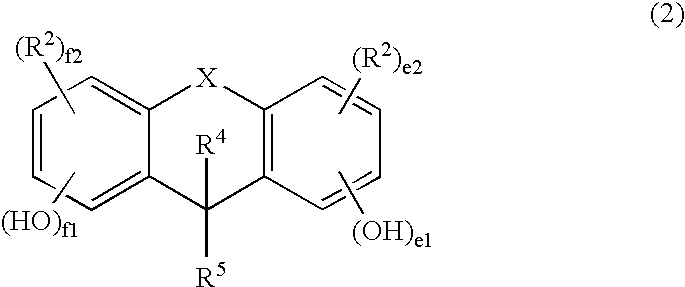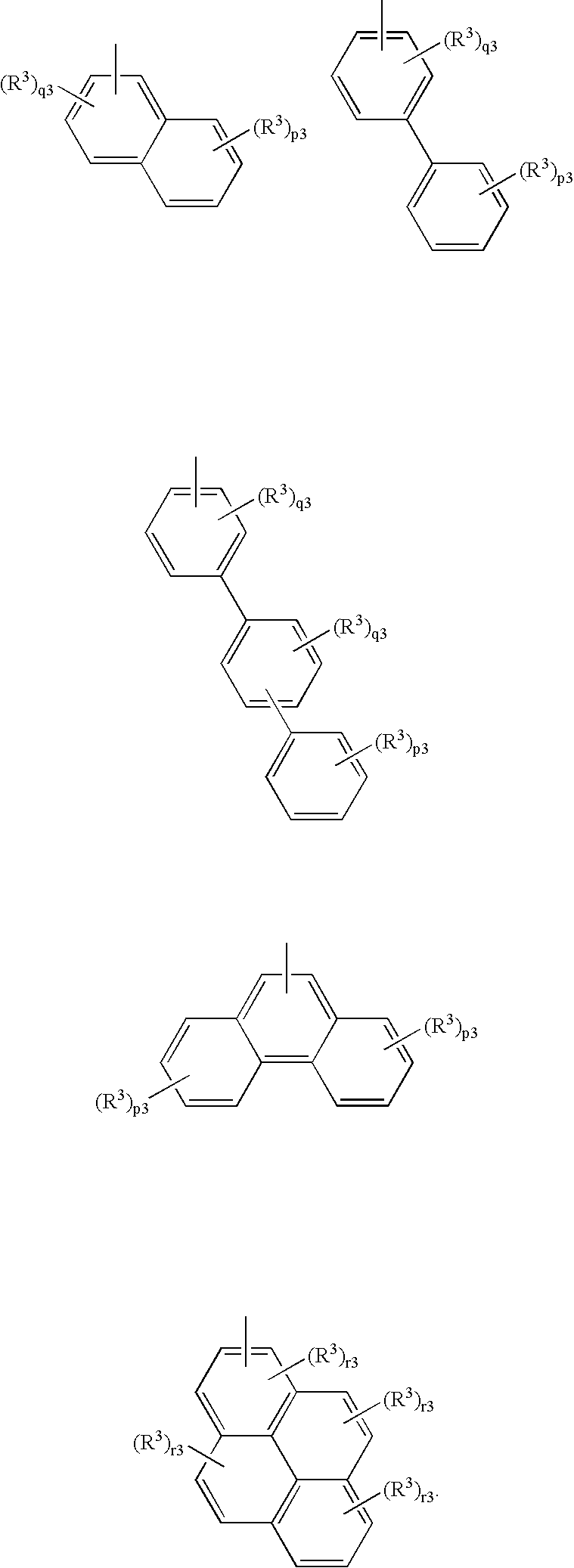Resist composition
a technology of resist and composition, applied in the field of resist composition, can solve the problems of reducing product yield, difficult to control the dimension of patterns, and lithographic techniques using polymeric resist materials have limitations in fine processing, and achieve high heat resistance, high resolution, and high sensitivity.
- Summary
- Abstract
- Description
- Claims
- Application Information
AI Technical Summary
Benefits of technology
Problems solved by technology
Method used
Image
Examples
synthesis example 1
Synthesis of Compound 1-1
[0182]
[0183]A mixture of 43.2 g / 0.4 mol of o-cresol and 17.0 g / 0.1 mol of acetonaphthone was heated to about 60° C. to form a solution. After adding 0.1 ml of sulfuric acid, 0.8 ml of 3-mercaptopropionic acid, and 10 ml of toluene to the solution, the reaction was allowed to proceed under stirring. When the conversion of o-cresol reached 100%, the reaction product solution was added with 100 ml of toluene and cooled to precipitate crystals. The crystals were separated by vacuum filtration, washed with a warm water of 60° C. under stirring, and purified by recrystallization, to obtain 3.86 g of the aimed compound
synthesis example 2
Synthesis of Compound 1-2
[0184]
[0185]In the same manner as in Synthesis Example 1, 37.6 g / 0.4 mol of phenol and 17.0 g / 0.1 mol of acetonaphthone were allowed to react, to obtain 3.50 g of the aimed compound.
synthesis example 3
Synthesis of Compound 1-3
[0186]
[0187]In the same manner as in Synthesis Example 1, 44.0 g / 0.4 mol of catechol and 17.0 g / 0.1 mol of acetonaphthone were allowed to react, to obtain 3.33 g of the aimed compound.
PUM
| Property | Measurement | Unit |
|---|---|---|
| Temperature | aaaaa | aaaaa |
| Percent by mass | aaaaa | aaaaa |
| Percent by mass | aaaaa | aaaaa |
Abstract
Description
Claims
Application Information
 Login to View More
Login to View More - R&D
- Intellectual Property
- Life Sciences
- Materials
- Tech Scout
- Unparalleled Data Quality
- Higher Quality Content
- 60% Fewer Hallucinations
Browse by: Latest US Patents, China's latest patents, Technical Efficacy Thesaurus, Application Domain, Technology Topic, Popular Technical Reports.
© 2025 PatSnap. All rights reserved.Legal|Privacy policy|Modern Slavery Act Transparency Statement|Sitemap|About US| Contact US: help@patsnap.com



